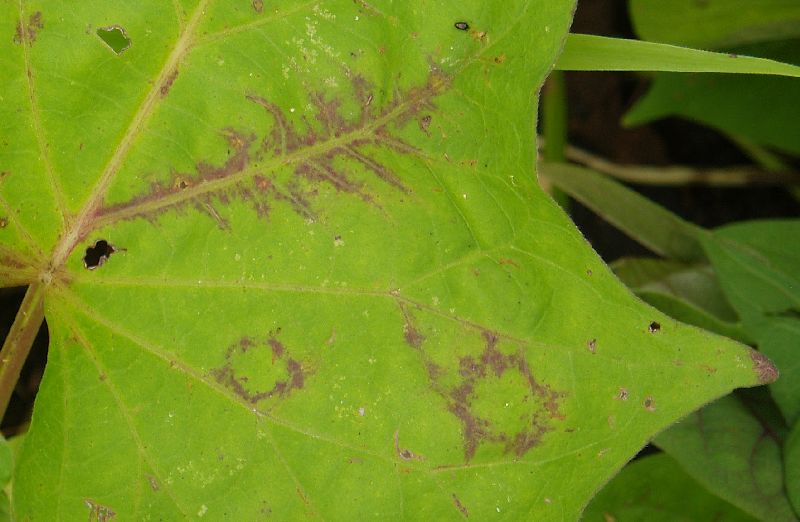|

Yellowing
of leaf veins (vein clearing) may be accompanied by distortion or
puckering (S. Fuentes & L. Salazar).

Chlorotic
spots with purple rings, and purple edged vein feathering (J.
O'Sullivan).
|
Diagnostic summary
-
on mature leaves, faint to distinct, scattered chlorotic spots,
which may be bordered by purplish pigment in some cultivars.
-
classic irregular chlorotic patterns (feathering) along main veins with or without purple margins occur in
some cultivars.
-
Increased stress can lead to symptom expression,
whereas rapid growth may result in symptom remission.
-
on storage roots, the common strain causes no symptom on any cultivar, but
the “russet crack” and “internal cork” strains cause external and
internal necrotic lesions
on certain varieties, respectively.
-
Symptom
visibility on foliage is influenced by cultivar susceptibility, degree
of stress, growth stage, and virus strain virulence.
|
Taxonomy
Economic
importance
Geographical
distribution
Symptoms
Morphology
Ecology
Host
range
Management
References
View full fact sheet
|

